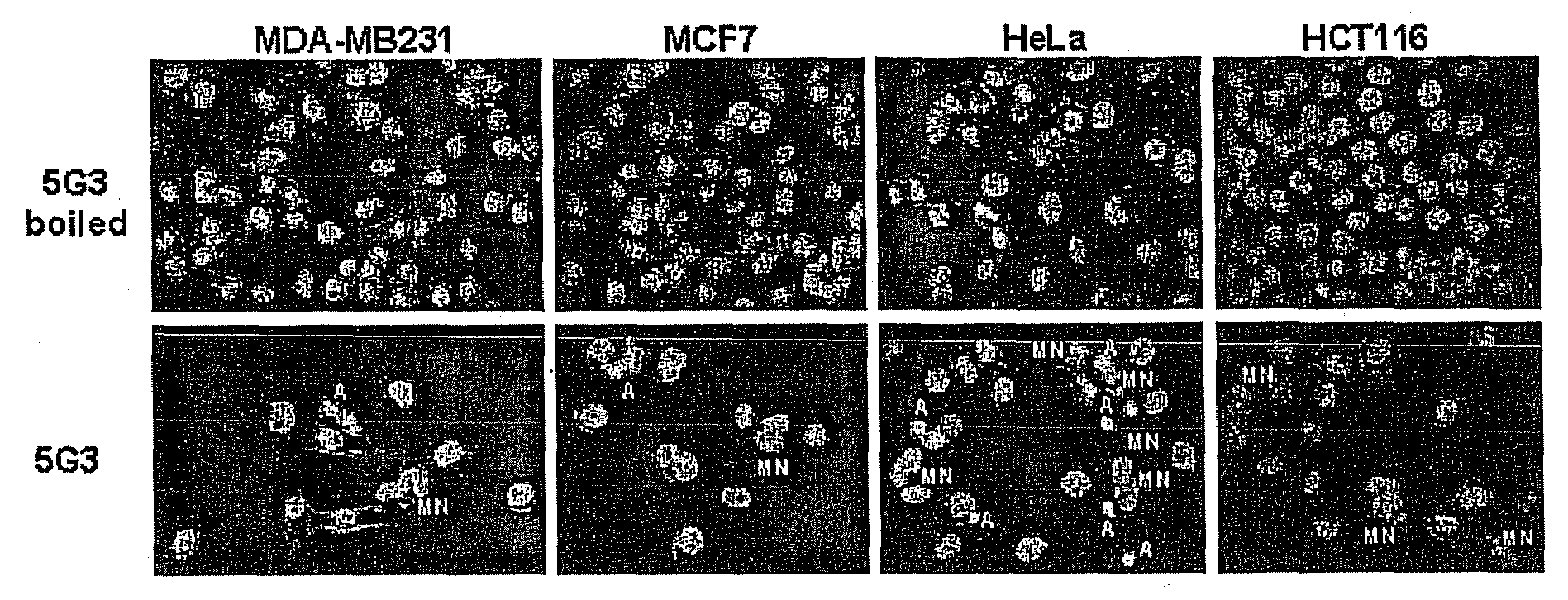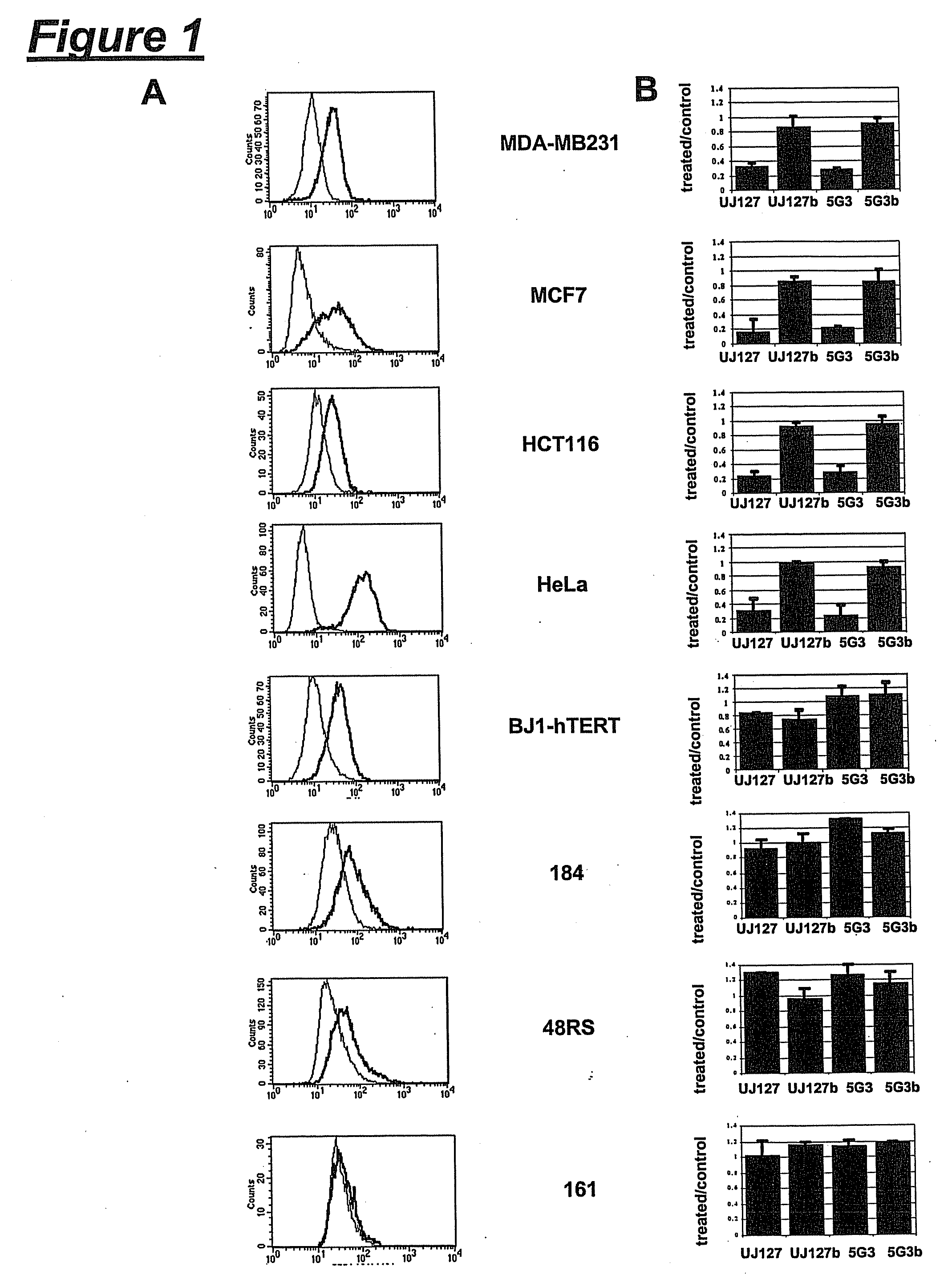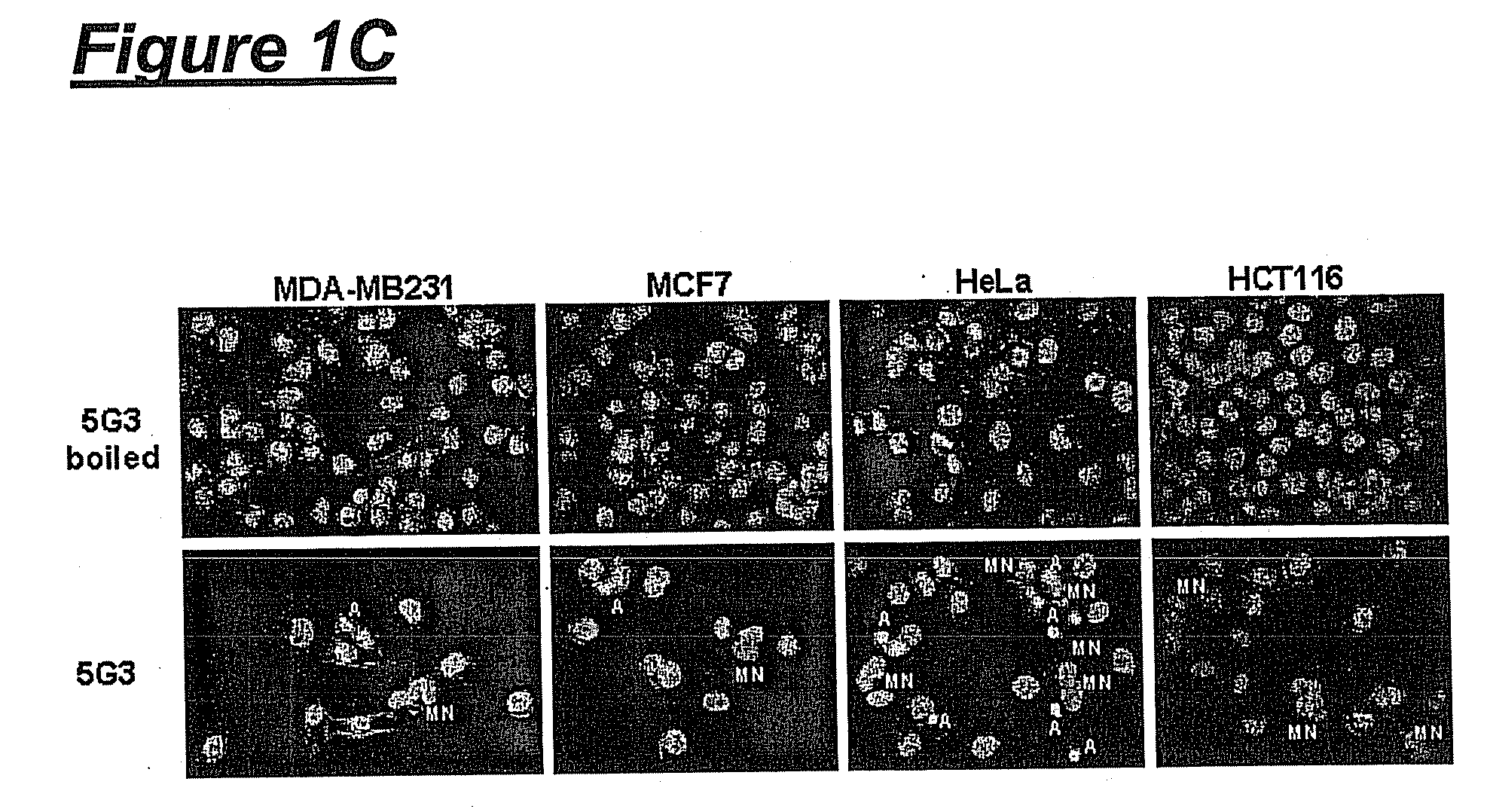Antibody-Mediated Induction of Tumor Cell Death
a tumor cell and antibody-mediated technology, applied in the field of antibody-mediated induction of tumor cell death, can solve the problems of rare elimination of tumor cells in cancer patients, limited approaches for patients in remission to live under threat of recurring primary or metastatic disease, and limited treatment options
- Summary
- Abstract
- Description
- Claims
- Application Information
AI Technical Summary
Benefits of technology
Problems solved by technology
Method used
Image
Examples
example 1
Tumor and Normal Cell Growth Inhibition by Anti-L1CAM Antibodies
[0050]Anti-L1CAM antibodies were tested to determine their effect on tumor cell growth. The effects of an anti-L1CAM monoclonal antibodies UJ127 and 5G3 on growth of tumor and normal cells were investigated using MDA-MB231 and MCF-7 breast carcinoma cell lines, HeLa cervical carcinoma (all obtained from the American Type Culture Collection, Manassas, Va.) and HCT116 colon carcinoma lines (a gift from B. Vogelstein, Johns Hopkins Medical Institutions, Baltimore, Md.), telomerase-immortalized hTERT-BJ1 normal human fibroblasts (Clontech, Palo Alto, Calif.), and three cultures of normal human mammary epithelial cells (HMEC): 48RS, 184 (both passage 7) and 161 (passage 9), isolated from mammoplasty (provided by Dr. Martha Stampfer, Lawrence Berkeley National Labs, Berkeley, Calif.). HMEC cultures were grown in MEGM, a serum-free medium containing human epidermal growth factor (at a concentration of 10 ng / ml), insulin (5 μg / ...
PUM
| Property | Measurement | Unit |
|---|---|---|
| Fraction | aaaaa | aaaaa |
| Fraction | aaaaa | aaaaa |
| Fraction | aaaaa | aaaaa |
Abstract
Description
Claims
Application Information
 Login to View More
Login to View More - R&D
- Intellectual Property
- Life Sciences
- Materials
- Tech Scout
- Unparalleled Data Quality
- Higher Quality Content
- 60% Fewer Hallucinations
Browse by: Latest US Patents, China's latest patents, Technical Efficacy Thesaurus, Application Domain, Technology Topic, Popular Technical Reports.
© 2025 PatSnap. All rights reserved.Legal|Privacy policy|Modern Slavery Act Transparency Statement|Sitemap|About US| Contact US: help@patsnap.com



